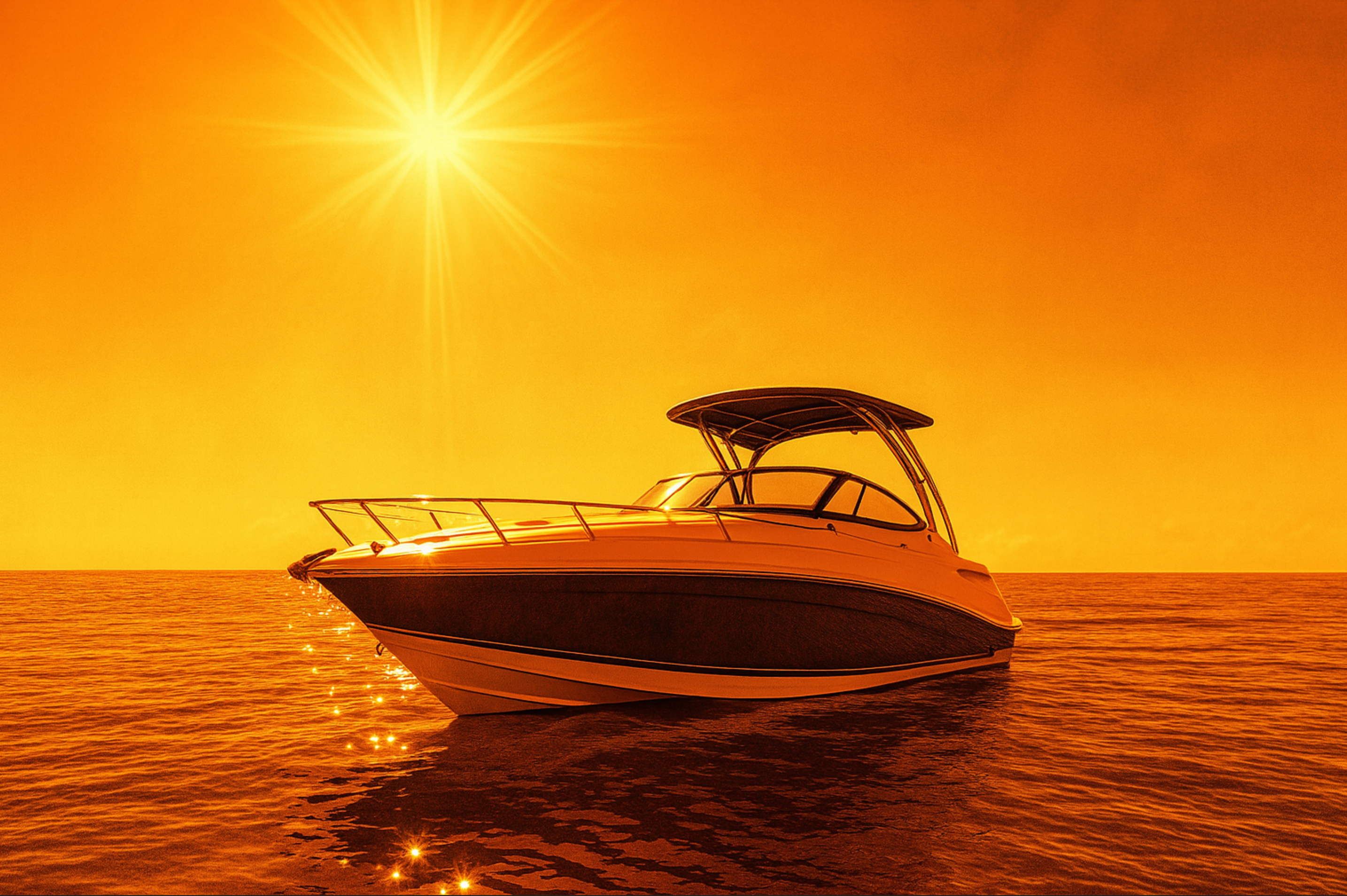When most boaters think of sun damage, they picture the peak of summer: July heat, blazing UV rays, and long days on the water. But what if we told you that late summer—those deceptively beautiful days in August and September—can be even more damaging to your boat’s surfaces?
It’s not just anecdotal. It’s backed by science.
Let’s break down why late-season sun exposure is often underestimated—and why now is the most critical time to protect your boat’s gelcoat, vinyl, and trim.
☀️ 1. UV Radiation Peaks Later Than You Think
While air temperatures peak in July, UV radiation—the invisible enemy—often remains elevated well into August and September.
📚 The Science:
According to the Environmental Protection Agency (EPA) and NASA’s Total Ozone Mapping Spectrometer (TOMS) data, UVB radiation levels remain dangerously high through September, particularly in the mid-latitudes of the U.S.
-
UVB rays are responsible for photo-oxidation, which breaks down the polymers in gelcoat and marine vinyl.
-
This leads to chalky oxidation, fading, and cracking—even when the air feels cooler.
👉 Translation: Even if you’re not sweating, your boat is still cooking.
🔥 2. Cumulative Heat Load Wears Down Gelcoat
By late summer, your boat has endured months of thermal cycling—the daily expansion and contraction of materials as temperatures rise and fall. This process weakens the gelcoat’s molecular integrity, making it more susceptible to damage from:
-
Oxidation
-
UV penetration
-
Moisture intrusion
🧪 The Chemistry:
Gelcoat is made of unsaturated polyester resin. Prolonged exposure to solar radiation above 350 nanometers leads to chain scission—the breaking of polymer chains—resulting in surface degradation.
The longer the season goes on without protection, the more brittle and porous your gelcoat becomes, which accelerates further damage exponentially.
🛑 3. Depleted Protection from Earlier Waxes and Sealants
Most protective waxes and even some ceramic sprays applied early in the season have broken down or evaporated by late August.
🔬 The Proof:
Studies in the Journal of Coatings Technology and Research show that standard polymer waxes experience up to 60% degradation in UV-blocking efficiency after just 8–10 weeks of sun exposure.
If you applied wax or sealant in May or June, chances are it's already exhausted its protective abilities. That leaves your surfaces vulnerable just as late-summer rays keep intensifying.
🌫 4. Humidity + UV = Mold and Mildew Time Bomb
Late summer means hot days and cool nights, especially near bodies of water. That combination leads to:
-
Condensation on vinyl seats, lockers, and below-deck surfaces
-
Increased mold and mildew growth, especially when UV protection has broken down
Without a proper UV + mold preventative, you're setting the stage for unsightly stains and foul odors—and worse, potential vinyl breakdown from microbial activity.
🔍 The Microbiology:
Mold spores thrive in humid, shaded areas, but even exposed surfaces are at risk when plasticizers leach from aging marine vinyl—creating food sources for microbes.
🧴 5. Late Summer Is When Most Boaters Let Maintenance Slide
Ironically, late summer is also when most boaters become less consistent with washing, conditioning, and protecting their boats—creating a perfect window for damage to set in.
Skipping UV protectant or neglecting to rinse after use in brackish or sunny conditions can allow:
-
Salt ions to crystallize and etch the surface
-
Pollutants and sunscreen residues to react with UV light, forming free radicals that degrade coatings
-
Waterline scum and oxidation to embed deeper due to prolonged sun exposure
✅ How to Protect Your Boat from Late Summer Sun
You still have time to prevent lasting damage—here’s what science recommends:
-
Use a Marine-Grade UV Protectant with blockers like benzotriazole or quaternary ammonium compounds (like in SKWOL’s UV & Mold Protectant) to prevent vinyl breakdown and mold growth.
-
Apply a Ceramic Sealant to gelcoat and fiberglass to reflect UV rays and resist oxidation.
-
Wash regularly with a pH-neutral soap to remove residues that react under UV light.
-
Dry thoroughly and ventilate compartments after each use to stop moisture buildup.
🔚 Final Word: Don’t Let Late Summer Wreck Your Shine
Late summer may feel like the wind-down, but the science says otherwise. This is when your boat is most vulnerable—thanks to a combination of intense UVB exposure, ozone degradation, and high humidity.
Treat your boat now, and you’ll not only preserve its looks—you’ll extend its life, avoid costly repairs, and store it clean and protected when the season does end.



Share:
Why “Polish and Protection” Products Don’t Actually Protect Your Boat for Long
Gelcoat starting to fade? How to Bring it Back Before It’s Too Late.